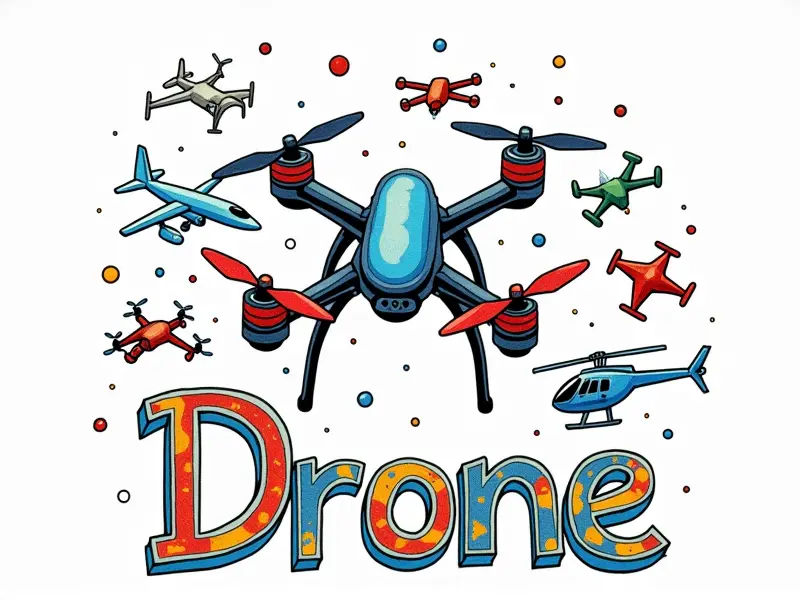Troubleshooting flight issues

Why Is My FPV Racing Drone Failing?
FPV racing drones are designed for high-speed maneuverability but can encounter several issues that affect their performance:
- Battery Voltage Drop: Ensure your battery has sufficient voltage to power the drone. Low voltage can cause erratic behavior.
- Propeller Damage or Imbalance: Check for any signs of damage on propellers and ensure they are balanced properly.
- Pilot Skill Level: Improper control inputs can lead to crashes or poor performance. Practice flying techniques in a safe environment.
Troubleshoot RC Helicopter Hover Issues
Holding steady hover is critical for RC helicopters, and several factors can cause instability:
- Weight Distribution: Ensure the helicopter's center of gravity is correctly balanced. Adjust weights if necessary.
- Main Rotor Blade Balance: Unbalanced blades affect lift distribution, causing wobble or drift.
- Battery Capacity: A weak battery can lead to insufficient power for sustained hover.
Solve RC Airplane Stability Problems
Maintaining stability during flight is essential for RC airplanes. Common issues include:
- Airfoil Design: Ensure the wings are properly designed and attached to provide sufficient lift.
- Fuselage Alignment: Misalignment can cause yaw or pitch instability, affecting overall control.
- Rudder and Elevator Trim: Properly set trim values help maintain straight flight paths without constant correction.
Fix Common RC Quadcopter Flight Problems
Quadcopters are prone to various issues that can impact their stability and performance:
- Motor Synchronization: Ensure all motors run at the same speed for balanced lift.
- Battery Capacity: A weak battery can cause sudden drops in power, leading to crashes or loss of control.
- Propeller Balance: Unbalanced propellers create uneven thrust, affecting stability and maneuverability.
Prevent RC Drone Motor Overheating Issues
Motor overheating can severely impact the performance and longevity of your drone. To prevent this issue:
- Cooling System: Use a cooling system or fan to dissipate heat.
- Battery Management: Avoid over-discharging batteries, which can cause excessive heat generation.
- Motor Maintenance: Regularly clean and inspect motors for debris that could impede airflow.
Diagnose & Repair RC Plane Glide Errors
Glide errors often indicate issues with aerodynamics or control surfaces. To diagnose and fix these problems:
- Aerodynamic Design: Ensure the plane's wings are designed for efficient gliding.
- Rudder Adjustment: Properly adjust the rudder to maintain straight glide paths.
- Elevator Control: Fine-tune elevator settings to achieve optimal descent angles without diving or stalling.
Addressing Propeller Imbalance in Drones
An imbalanced propeller can lead to vibration and instability. To address this issue:
- Weigh Each Propeller: Use a balance tool to measure the weight of each blade.
- Adjust Weight Distribution: Add or remove material as needed to achieve equal mass distribution.
- Balancing Tools: Utilize specialized balancing tools for precise adjustments.
Why Does My Quadcopter Drift in Wind?
Wind can significantly affect quadcopters, causing them to drift off course. To mitigate this issue:
- Airframe Design: Use aerodynamic designs that minimize wind resistance.
- Pilot Technique: Practice techniques for maintaining control in windy conditions.
- Sensor Calibration: Ensure sensors are calibrated correctly to provide accurate readings under various environmental conditions.
Debugging RC Airplane Stability Problems
To debug stability issues with your RC airplane, follow these steps:
- Check Control Surface Alignment: Misaligned control surfaces can cause erratic flight behavior.
- Test Battery Capacity: Weak batteries may not provide sufficient power for stable flight.
- Review Flight Logs: Analyze logs to identify patterns or anomalies that indicate specific problems.
Common RC Helo Flight Control Malfunctions
RC helicopters can experience various control malfunctions, including:
- Stick Sensitivity: Adjust stick sensitivity settings for better control response.
- Servo Calibration: Ensure servos are properly calibrated to respond accurately to input signals.
- ESC Settings: Fine-tune electronic speed controller (ESC) parameters for optimal performance.
Troubleshoot FPV Racing Drone Connectivity Issues
Connectivity problems can severely impact the performance of an FPV racing drone. To troubleshoot these issues:
- Check Antenna Placement: Ensure antennas are positioned correctly for maximum signal strength.
- Update Firmware: Keep firmware up-to-date to benefit from bug fixes and performance improvements.
- Signal Interference: Identify sources of interference (e.g., other electronic devices) and move the drone away if necessary.
Conclusion
Maintaining optimal performance in RC drones, planes, quadcopters, and helicopters requires addressing various technical issues. By following the guidelines outlined above, you can ensure your equipment operates efficiently under diverse conditions. Regular maintenance, proper calibration, and troubleshooting are key to enjoying seamless flight experiences.

